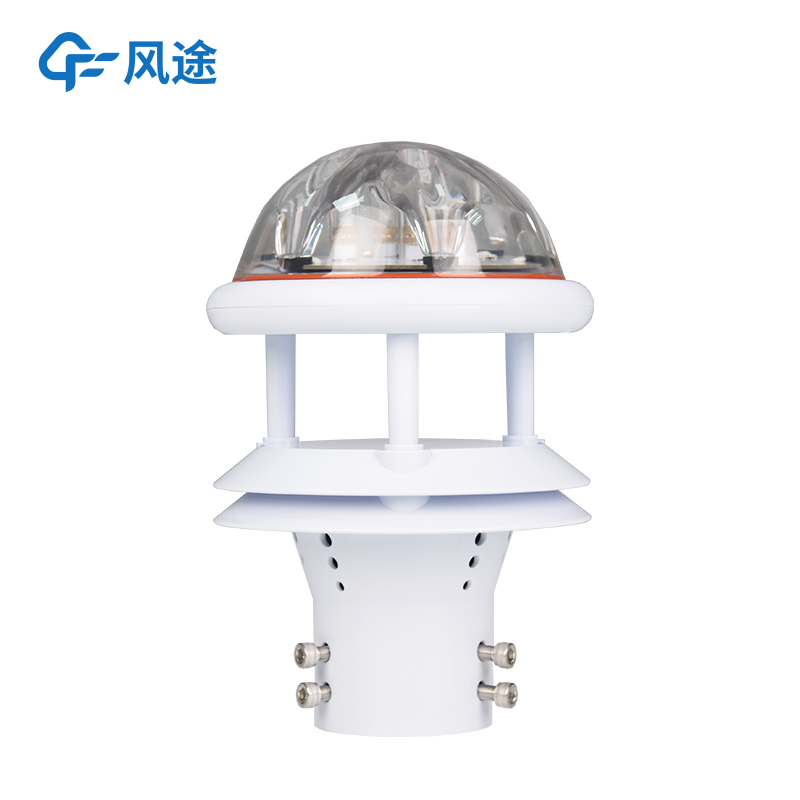Shandong Fengtu IOT Technology Co., Ltd
Sales Manager:Ms. Emily Wang
Cel,Whatsapp,Wechat:+86 15898932201
Email:info@fengtutec.com
Add:No. 155 Optoelectronic Industry Accelerator, Gaoxin District, Weifang, Shandong, China

Sales Manager:Ms. Emily Wang
Cel,Whatsapp,Wechat:+86 15898932201
Email:info@fengtutec.com
Add:No. 155 Optoelectronic Industry Accelerator, Gaoxin District, Weifang, Shandong, China
time:2025-01-21 09:40:05 source:Weather Station viewed:454 time
Measuring rainfall is an important task in fields such as meteorological research, disaster early warning, hydrological monitoring, and agricultural management. Here are three common types of rain gauges.
1. Radar Precipitation Sensor Rain Gauge Distrometer
The Radar Precipitation Sensor Rain Gauge Distrometer utilizes 24GHz Doppler radar wave technology. By measuring the fall velocity and particle size of precipitation droplets, it can distinguish between types of rain, snow, and hail, as well as the rainfall intensity.
Measuring Range: 0 - 200 mm/hour.
Measurement Accuracy: 5% (when wind speed is less than 5 m/s).
No Mechanical Components: There are no moving parts inside, requiring almost no maintenance.
Low Power Consumption: Power consumption is less than 2W.
Application Scenarios: Widely used in weather stations, smart city systems, and river flood prevention monitoring.
2. Piezoelectric Rain Gauge
The piezoelectric rain gauge makes use of the piezoelectric effect. It converts the pressure changes generated by raindrops hitting the sensor surface into electrical signals to measure rainfall.
Measurement Accuracy: Up to ±4%, with a resolution of 0.01 mm.
Fast Response Speed: Capable of quickly responding to precipitation changes.
Maintenance - Free: It has a compact structure and is easy to install and maintain.
Application Scenarios: Suitable for meteorological observation, hydrological research, and urban rainstorm monitoring.
The Optical Rain Gauge measures rainfall based on optical principles. It uses the scattering and absorption effects of light beams when passing through air with raindrops to detect the presence of raindrops.
Continuous Real - Time Monitoring: It can continuously monitor rainfall in real - time without being affected by the external environment.
Real - Time Data Collection: It adopts interruption technology to ensure the timeliness and accuracy of data.
Application Scenarios: Widely used in meteorology, agriculture, and hydrological monitoring.
In conclusion, these three types of rain gauges each have their own advantages and disadvantages and are suitable for different application scenarios. The Radar Precipitation Sensor Rain Gauge Distrometer is suitable for high - precision and multi - type precipitation monitoring; the piezoelectric rain gauge is suitable for scenarios requiring fast response and low maintenance; and the Optical Rain Gauge performs well in complex meteorological environments. When choosing a suitable rain gauge, factors such as accuracy, maintenance cost, and environmental adaptability need to be considered according to specific requirements.

rients such as nitrogen, phosphorus and potassium. This comprehensive monitoring capability greatly enhances the prevention of and response to agro-meteorological disasters, provides strong data support for meteorological services for modern agriculture, and lays a solid foundation for promoting the...
The weather station monitoring equipment is widely used in various fields that need weather monitoring, such as agriculture and hydrology. The equipment can monitor the rainfall near the ground, air temperature and humidity, wind speed and direction, air pressure, light radiation, carbon dioxide, so...
Park air quality monitoring station is an important part of urban garden construction in my country, and its main function is to monitor the concentration and distribution of air pollutants in parks. With the continuous acceleration of urbanization and the rapid growth of urban population, the probl...
Soil moisture monitoring is crucial for agricultural production, water resource management, flood warning and drought assessment. Soil moisture research has been carried out at home and abroad.For example, in the mid-to-high altitude areas of Switzerland, the SOMOMOUNT network has been established t...